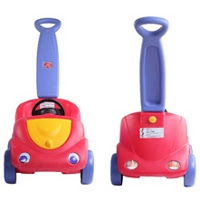Luckily today is increasingly segmented, dairy products, which are adjusted to the health of consumers.
As we get older, the body was no longer efficient use of nutrients that enter the body. For instance the use of the content of the milk is very rich in
nutrients. The most important component of
adult milk needed is a source of minerals such as calcium and phosphorus and protein.
Calcium milk can be absorbed by the body really well. Only cow's milk fat contains saturated fatty acids relative, so it's not good for people who tend to have vascular disease (associated with blood vessels). Well, where milk is best for you?
(1)
high-calcium milkIngredients:
The calcium content ranging from 500 mg-600 mg. While adults need about 500 mg of calcium. So, by consuming one glass of milk per day, the amount of calcium obtained was more than sufficient. Excess calcium need not worry because the body can manage.
Benefits:
The role of calcium in the body to help reduce the risk of osteoporosis (bone loss), which is usually caused by increasing age.
Suitable for:
Men and women aged 40 years. Because both to prevent bone loss. Only, because of the tendency to attack women for osteoporosis, so women who ate the most dairy type.
(2)
low fat MilkIngredients:
Total fat content is only about 0.4% only, or about 1 gram per cup of milk (200 ml). There are even fat-free products aka 0% fat content. The weakness of this product or tend to taste less fishy savory.
Body energy needs per day is obtained from the 50% carbohydrate, 20% from protein and 30% from fat. Requirements of fat in adult women are generally 30-50 grams per day and 40-60 grams per day for men. Of course this needs not just the amount of fats derived from milk, but also other food.
Benefits:
Reducing the risk of obesity that may occur without reducing other benefits of milk.
Suitable for:
Men and women, especially for those who have problems being overweight,
high cholesterol, coronary heart disease.
(3)
low fat high calcium milkIngredients:
Is a combination of two types of milk group; ie high calcium milk with
low fat milk.
Benefits:
Milk with high calcium content needed to maintain bone health so there is no thinning, especially for adult women. While a low fat content would reduce the risk of obesity (overweight).
Suitable for:
Men and women, especially those prone to osteoporosis, obesity, high cholesterol and there is a tendency of coronary heart disease.
(4)
High Protein MilkIngredients:
The protein requirement for adults of 48 grams per day. Of milk consumed, protein needs can generally get 15% or about 7.7 grams only. In a high-protein milk, protein content can be obtained at two times that of ordinary milk, which is about 30% or 15 grams.
Benefits:
The high protein content of milk normally obtained from the combination of protein, casein and whey protein is high. This protein combination is useful for the formation of muscle protein turnover and muscle cells are damaged.
Suitable for:
(Actually) can be consumed by men and women. Some additional material / fortification may be devoted to a particular gender. For example, the content of L-Glutamine (an amino acid that plays an important role in assisting the formation of an optimal muscle protein). Content of milk can be consumed by men who want athletic body. While the milk with the addition of L-Carnitine content (which play a role in the metabolism of the body through the burning of fat into energy), can be consumed by women who wanted to maintain her shape is still good.
(5).
Low Calorie MilkIngredients:
Milk generally has a total content of 70 calories per 100 grams or 140 calories per glass. At low milk calories, protein, fat and carbs only have 40 calories per glass / serving (serve size).
Benefits:
Can help women (and men) who
intend to lose weight, keeps your body lean or ideal body weight and beautify body shape.
Suitable for:
Those who tend to suffer from diabetes and obesity. Because the milk is free of sugar or use sugar substitutes are more healthy.
(6).
Low Sugar MilkIngredients:
Regular milk generally contains a total of 4% carbohydrate or 14 grams of sugar which can be obtained from sucrose or lactose. Well, low-sugar content of sugar in the milk and some even lower than 0%. Sweetness sweetener derived from sugar substitutes safe to consume, such as aspartame.
Benefits:
Reducing the risk of increasing blood sugar levels for diabetics. To intoleransi lactose / lactose in tolerance, low lactose content would make them more comfortable to consume milk.
Suitable for:
Men and women, especially those who have a tendency to
diabetes so that blood sugar levels can still be controlled and well controlled. Good for those who are obese and are on a diet (no need to worry about the fat content of carbohydrates, especially sugar).
 Subject: Old Man of the Sea
Subject: Old Man of the Sea



 Streetsboro, Ohio Company toys, Step 2 attract millions of products Buggy or stroller for the kids. Design error which allows the toy-like cars that slid out of control.
Streetsboro, Ohio Company toys, Step 2 attract millions of products Buggy or stroller for the kids. Design error which allows the toy-like cars that slid out of control.